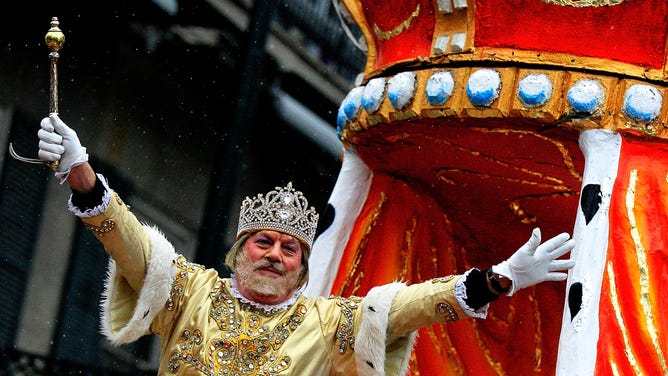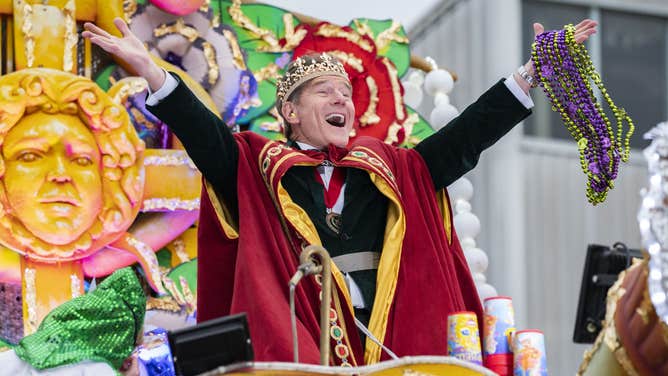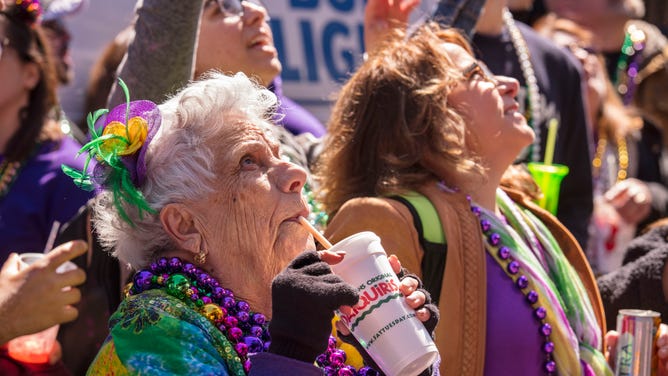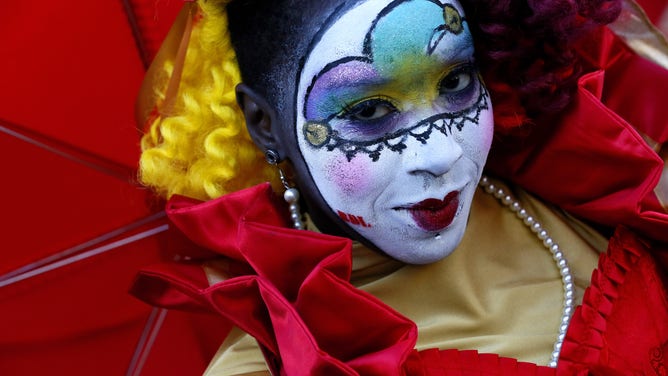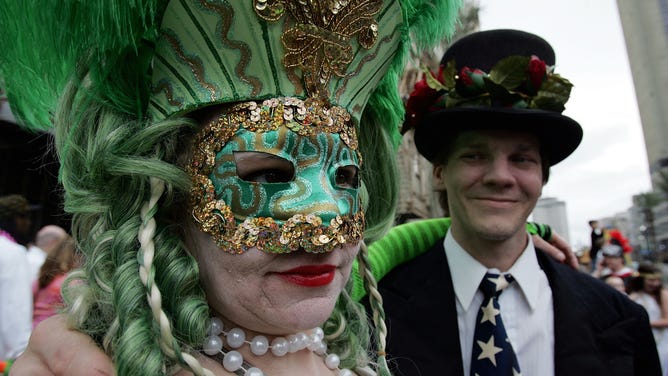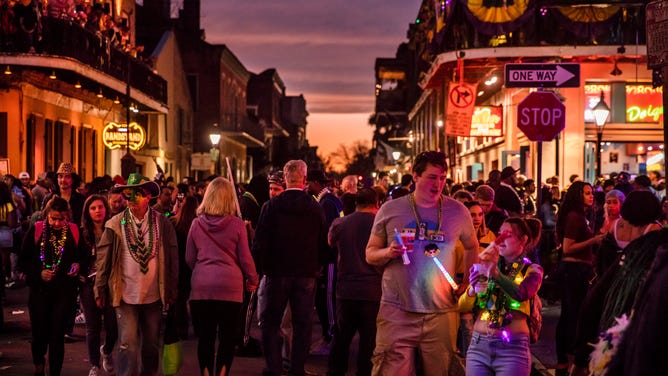Before the beads: How Mardi Gras bloomed from ancient traditions
New Orleans hosts the world’s largest Mardi Gras celebration. The tradition began centuries ago and has bloomed into a festive institution of the Bayou.
Mardi Gras - "It's Magic"
New Orleans is home to the world’s largest Mardi Gras celebration — a tradition that began as a small occasion centuries ago and has bloomed into a festive institution of the Bayou.
It’s the crescendo of Carnival season.
Mardi Gras, which is French for 'Fat Tuesday', is celebrated with a litany of colorful theatrics around the world.
Although Mardi Gras has become a global phenomenon, the city of New Orleans takes the cake for hosting the largest celebration — a tradition that began as a small occasion centuries ago and has bloomed into a festive institution of the Bayou.
The greatest free show on Earth
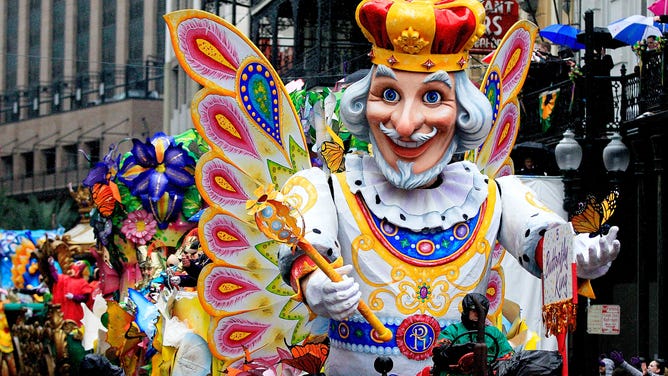
Members of Rex parade down St. Charles Avenue despite the rain during 2014 Mardi Gras Day.
(Sean Gardner / Getty Images)
"Mardi Gras is absolutely incredible," said Arthur Hardy, the publisher of Mardi Gras Guide magazine, based in New Orleans.
"If you can't have fun here, you better check your pulse because you're not breathing."
The streets of New Orleans come to life leading up to Mardi Gras, bursting with beads, street festivals, masquerade balls and parades.
"We call it the greatest free show on Earth," Hardy said.
Mardi Gras has been a part of New Orleans since the 1700s. According to Hardy, the celebration was a way for the French colonists who founded the city to honor their French heritage and tradition — particularly, their Catholic faith.
An ancient tradition
"The Catholic Church has a lot to do with Mardi Gras," Hardy said.
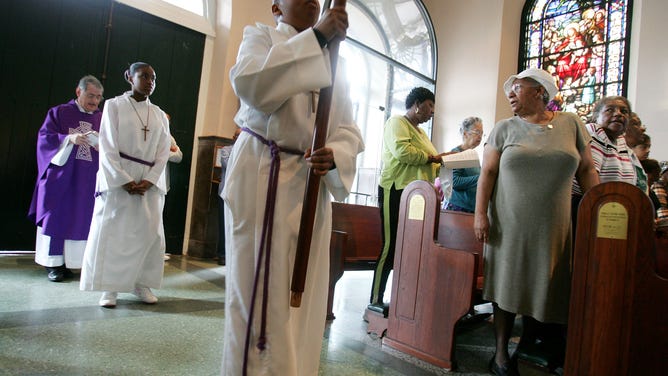
Worshipers attend an Ash Wednesday service at St. Jude's Church the day after Mardi Gras festivities in New Orleans.
(Mario Tama / Getty Images)
According to Hardy, to help bring in early converts to the faith, the church folded ancient pagan beliefs and celebrations into Christian practices.
One of those celebrations occurred in January and February, which the church adopted and turned into Carnival.
"The Carnival season is a time for us to experience pleasures of the flesh," Hardy said.
While the season is roughly timed with the pagan celebrations of ancient times, the exact dates of Carnival today vary around the world.
In New Orleans, it begins on January 6, which is the Christian holiday called the Feast of the Epiphany, and then ends on Mardi Gras — the day before Ash Wednesday and the beginning of Lent and 40 days of fasting.
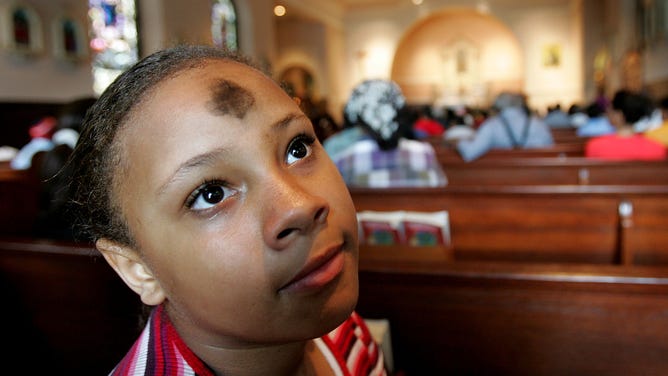
A girl wears a cross of ashes on her forehead prior to Ash Wednesday services in New Orleans.
(Mario Tama / Getty Images)
"Mardi Gras, really, in its simplest form, is the feast before the fast," Hardy said.
According to Encyclopedia Britannica, the name Mardi Gras or ‘Fat Tuesday’ comes from the French custom of using all the fats in the home before having to abstain from them during Lent.
"It's very much connected to the Catholic Church," Hardy said. "A lot of people have trouble wrapping your arms around that, but it's a fact."
King cakes, masked balls and Rex
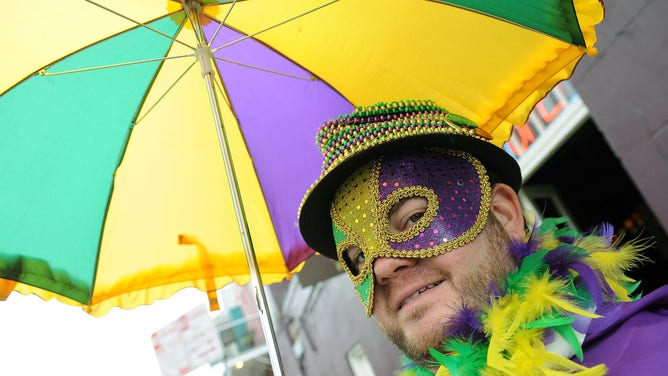
A man with an umbrella poses before a parade on Mardi Gras 2011 in New Orleans.
(Cheryl Gerber / Getty Images)
Today, people of many faiths and backgrounds celebrate Mardi Gras and the larger Carnival season.
LEARN: HOW THE FIRST AMERICAN MARDI GRAS WAS IN SWEET HOME ALABAMA
While those who partake might not do so under a religious pretext, for many celebrants in New Orleans, Mardi Gras is still a time to be festive and indulge in food, gifts, theater and overall merriment.
One icon of Mardi Gras is the king cake. According to Hardy, it’s estimated that more than a million of the oval pastries are shipped out of New Orleans during the Carnival season.
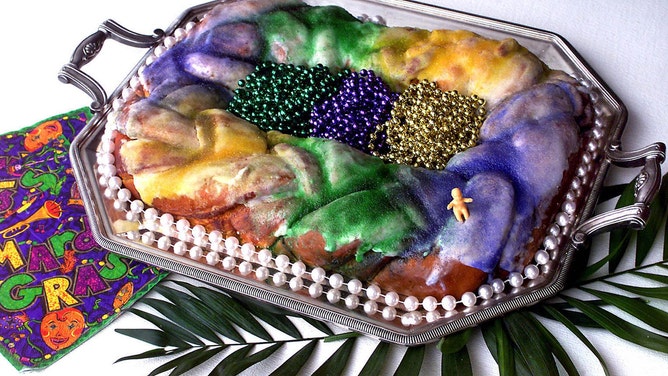
A New Orleans king cake.
(Charles Curtis / Duluth News-Tribune / Tribune News Service / Getty Images)
"What makes them unique, two things: They're decorated in purple, green and gold sugar on the top and inside the cake is an object," Hardy said.
According to Hardy, purple, green and gold are the official colors of Mardi Gras, with purple representing justice, green for faith and gold for power.
The object inside the cake is a tiny plastic baby. Hardy said some people believe it represents Jesus, given Mardi Gras and Carnival’s Christian roots. But previously, other items hidden in the cake were beans, coins and pecans.
"The idea is, whoever gets that slice of cake with that object is the king or queen, and it's kind of a party thing," he said. "The bad news is that person is obligated to buy the next king cake or throw next party."
Another major component of Mardi Gras are the private, invitation-only masquerade balls.
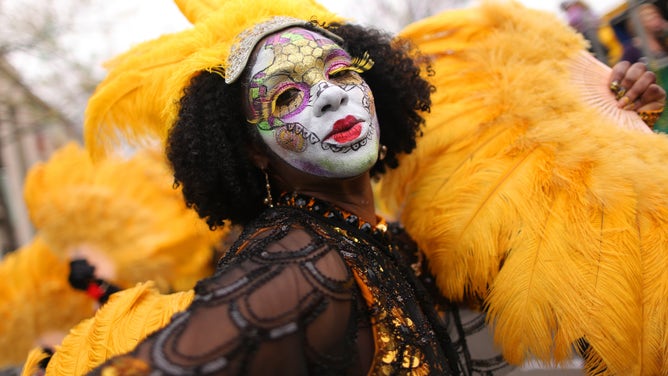
A reveler dances down St. Charles Avenue during Mardi Gras celebrations in 2020. All are invited to dress in masks and costumes for Mardi Gras.
(Jonathan Bachman / Getty Images)
"They feature a court, the king or queen, royalty, maids, dukes, ladies in waiting," Hardy said. "And of course, all the people on stage are in elaborate costumes."
He added that some of the groups that host masquerade balls date back to the 1850s.
But the part of Mardi Gras that most people see takes place right on New Orleans’s streets.
Over a span of 12 days, the city hosts more than 50 parades. According to Hardy, the tradition of celebrating Mardi Gras with parades dates back to 1857, when the city hosted its very first.
"Parades are almost moving theater, if you think about it," he said. "So, it elongates the opportunity in the audience or spectators to see more of the event."
Parades have tossed ‘throws’ to spectators for a century.
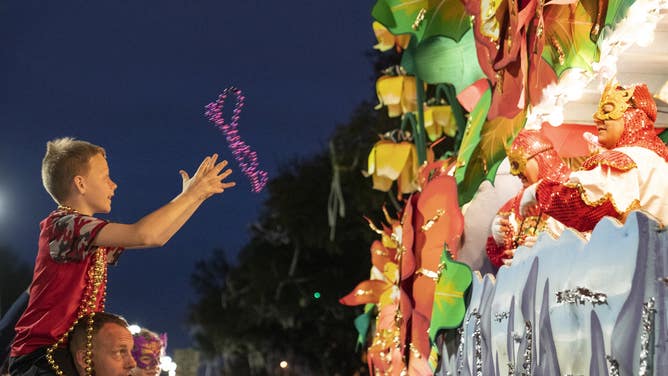
A boy reaches for beads thrown by the 2020 Krewe of Orpheus parade.
(Erika Goldring / Getty Images)
"It's like playing Santa Claus on Christmas, the act of giving gifts to people in similar fashion, particularly to children," Hardy said. "Mardi Gras is a time when we all become kids again, we really do. No matter how old you are, and it's just a lot of fun."
"To see the interchange between the people on the floats with the gifts in their hands and the people in the street — it's magic. It's absolute magic."
As is the case with king cakes and masquerade balls, the parades also have a royal flair.
Every parade, Hardy said, has a king and/or queen. For 150 years, one king in particular has reigned supreme: Rex, the King of Carnival.
Religion and royals
A major theme running through the many components of Mardi Gras and Carnival season is the that of royalty.
"The royalty in Carnival are kind of a take off on European aristocracy," Hardy said. "Anybody can be king or queen for a day -- it's all make believe."
And while the fun of Mardi Gras and other Carnival celebrations have grown and transformed over the years — from its religious roots to make-believe royalty — the festival’s magic hasn’t begun to fade.
"It ought to be in your bucket list. You have to see it. Smell it, touch and feel. Listen to it," Hardy said. "It's a phenomenal experience."

